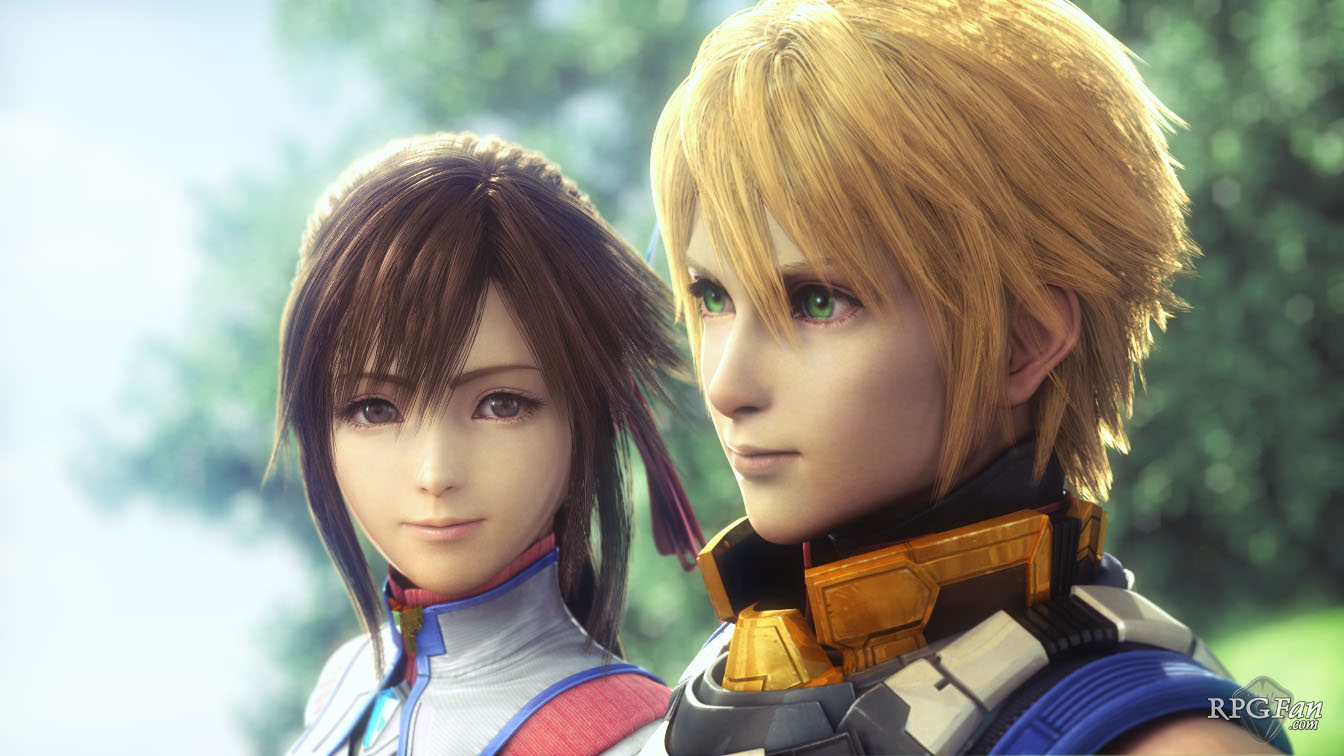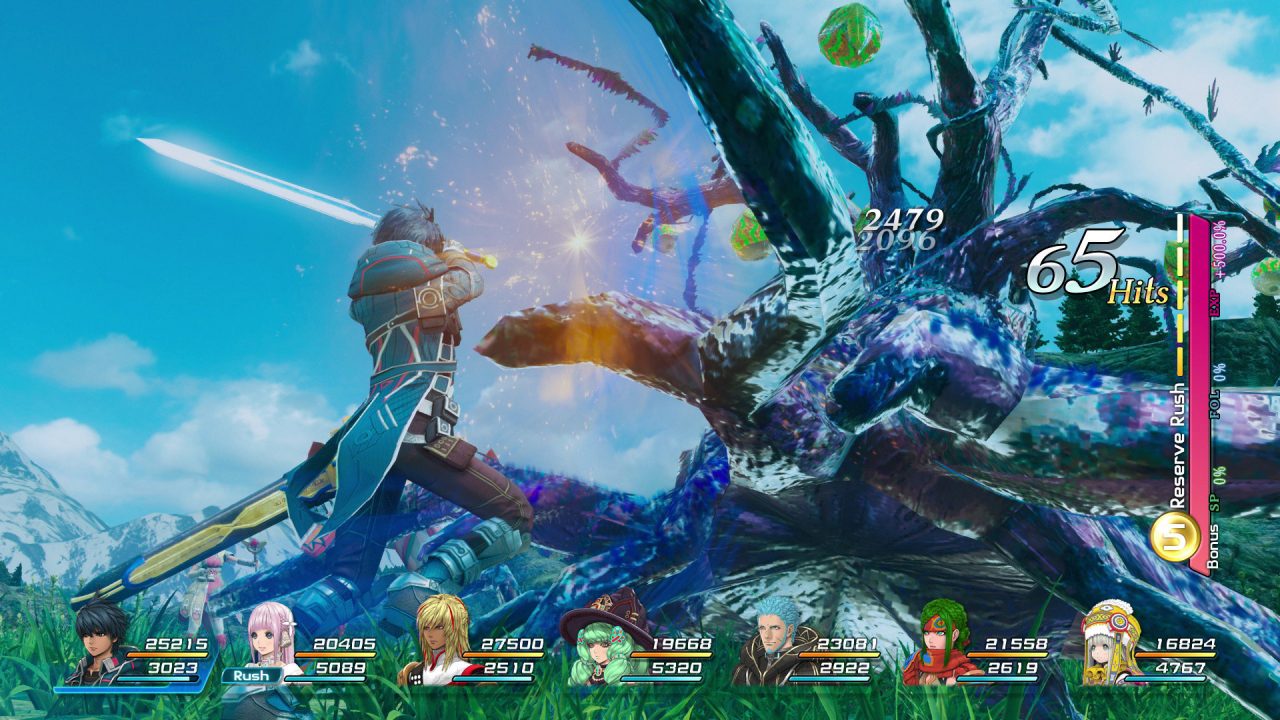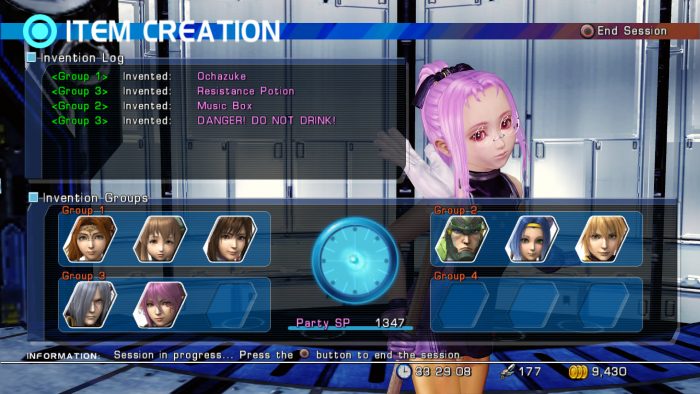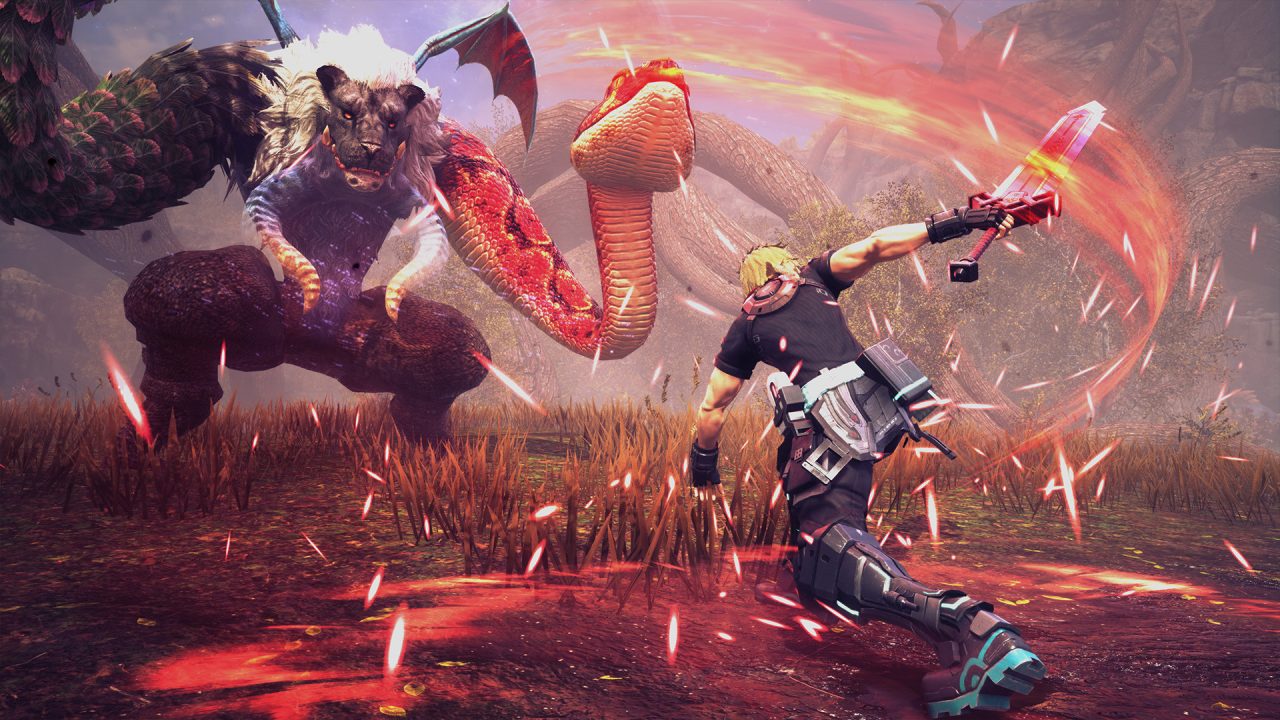The Star Ocean series is, in my opinion, massively underappreciated. Since beginning back in the mid-1990s, it has had quite the bumpy road, with entries generally releasing just once per generation and with wildly varying budgets and critical and player responses. Admirably, the Star Ocean games have never been afraid to make some unusual and interesting changes to their core gameplay as well as storylines (more on this later…). I’m a long-time fan since playing The Second Story back on the PlayStation, and I felt it was due time the series was given its flowers as an influential standout in the RPG genre.
The first game in the series to be released in the west was The Second Story (Star Ocean 2) on the PlayStation in 1999 (US) and 2000 (EU). At the time, I remember thinking to myself ‘well where was the first story?’ wondering why I’d never heard of or seen a copy of a Star Ocean game before. The original was a Japan-only release in 1996 on the Super Famicom, until its ‘First Departure’ version on the PSP utilising the same engine/gameplay style as The Second Story. First Departure is a very short game by series standards but certainly not simple—it features quite a complex and rather baffling skill/ability/item creation system, and character recruitment is also quite tricky here, with certain complexities in order to get particular characters into your party of eight. It also establishes many features that became synonymous with the Star Ocean name.
It’s fair to say, and I don’t think anyone would disagree with me here, that The Second Story really put the series on the map and it remains one of the best and most-loved entries—especially having now had the ‘R’ treatment in 2023 with a stellar remaster. It has it all: a great cast of interesting characters from a variety of races and home-planets to make your team of eight up from; a choice of two main characters, each with their own twist on the same story; a strong combat system (for its time, anyway); and a fantastic story that builds well, with many layers to the lore and antagonists to uncover both through the main quest and side events for the vigilant player. A tough act to follow!
The next entry in the series (not counting the spin-off/sequel Blue Sphere, a Japan only GameBoy Colour game) released on the PS2 in 2004—Star Ocean: Till the End of Time (Star Ocean 3). Hooo boy, there is so much to say about this game, and I’ll get to it all throughout this article, but this one really split the fanbase of the series both at the time and still to this day. You can generally divide the players of SO3 into two groups: people who loved the plot twist and people who hated it and thought it ruined the entire series. I am very much in the former camp. Story aside, this game is the only one to feature three-character battles and MP death (enemies have attacks that target your MP as well as HP and you can die by having your MP reduced to zero—and yes, you also need to use MP for all skill and magic use), but also includes some of the series best and most iconic party members. Maria Traydor, anyone?
After such a divisive third entry, fans wondered whether we would even see a fourth, with some saying that Till the End of Time killed off the franchise. Thankfully, that was not the case. Star Ocean: The Last Hope (Star Ocean 4), released in 2009 seemingly as an Xbox 360 exclusive. I was so disappointed at the time with this, and actually bought myself a 360 purely to play this game, only to find out a few months later that an ‘International’ version, with some small extras including new character artwork and adjusted chests and item stats, was due to release on the PS3 the following year. Was it intentional that SO4 used the same subtitle as Star Wars: Episode IV? Was SO4 meant to act as something of a soft-reboot of the series? It’s certainly possible and was probably the only thing tri-Ace and Square Enix felt comfortable doing after the controversial SO3.
Unfortunately, SO4 saw diminished sales and a more middling reception compared to the past couple of games, with gamers being particularly critical of the characters and some of the overly long dungeon segments. Whilst to some extent I do agree with both of these criticisms, I think the hate for this game is overblown. Yes, some of the characters are pretty annoying (Meracle and Lymle, primarily), and the whole cast is generally very archetypal and lacking the nuance of earlier games, but there are still a few that I enjoyed (Myuria, Arumat, Reimi and even Edge). This game also has the best battle system iteration too—it’s fast, snappy, weighty and a whole lot of fun.
Now, if fans were concerned after SO3 that we might never see another Star Ocean game, this feeling was even more present after SO4. Things went quiet for a very long time, and it seemed like maybe the series was dead until in 2016 when Star Ocean: Integrity and Faithlessness (yes, that is the real title) was released, much to everyone’s surprise. This entry is another tricky one to talk about, as it was the first where the lack of budget was very evident. I still admire the dedication of tri-Ace to make this as good as they could under the restrictions and to keep the series alive, even if that was with a game much smaller in scope than we were used to. SO5 is one of the shortest games in the series, and with a much smaller explorable world. It features probably the most backtracking I’ve ever experienced in a video game, and considering the game is called ‘Star Ocean’, you see surprisingly little of space with the story set almost entirely on one planet. Battles here are completely bonkers, with all of the seven characters participating together. Speaking of characters, this cast is much less irritating than SO4’s and features some great Private Actions (little one-on-one moments between the MC and another party member, viewable in towns) that give each character depth and development.
I’m really pleased that someone at Square Enix recognises that this series has a devoted fanbase and wants to keep putting out entries, even if we only get them once per console generation. Without them, we’d never have had Star Ocean: The Divine Force (Star Ocean 6), in 2022—the most recent entry. SO6 remedied many of the complaints fans had about the fourth and fifth games: expanding the world, less forced backtracking, better characters, and more actual space. This game also brings back optional recruitable party members (albeit with less strict requirements around recruitment and with only one character per route) for the first time since SO3, and the ability to choose your MC for the first time since SO2—do you choose space-faring delivery man Raymond Lawrence, or Princess Laeticia of Aster IV, the planet where much of the game takes place? The Divine Force certainly moves the series in a positive direction, while generally playing everything very safe and giving fans what they’ve been asking for. There’s still very evidently a tight budget here, but tri-Ace get as much as they can out of it and deliver a pretty great game.
So, now that I’ve been through the release order of the Star Ocean games, let’s look at the story timeline and some of the elements that cross over between the individual games. For the uninitiated, here’s the timeline at a glance (SD meaning Space Date):
SD. 10 – Star Ocean: The Last Hope (SO4)
SD. 46 and 346 – Star Ocean: First Departure (SO1)
SD. 366 – Star Ocean: The Second Story (SO2)
SD. 537 – Star Ocean: Integrity & Faithlessness (SO5)
SD. 583 – Star Ocean: The Divine Force (SO6)
SD 772 – Star Ocean: Till the End of Time (SO3)
As you can see, the release order does not equal the chronological timeline. I’ve never tried a playthrough in timeline order, though I don’t imagine it would be a bad idea from a storyline perspective, at least. Gameplay might be a different matter: jumping from SO4 to 1 could feel very frustrating, even if you opt for the ‘R’ version of First Departure, as it still lacks many modern QOL updates and the battle system is the slowest and clunkiest in the series.
Each game contains a standalone story, so they can be enjoyed in any order, much like Final Fantasy. Where Star Ocean differs is that they are all set within one timeline, so smaller elements, cameos, and name-drops do occur that will mean more to people who’ve played multiple games. For example, the Kenny family of space adventurers and Pangalactic Federation members feature in the playable casts of 1 (Ronyx), 2 (Claude), 5 (Emmerson), and 6 (Marielle), and are name-dropped in 4. I don’t think they’re mentioned in 3, but I might be misremembering that! Certain planets also make multiple appearances—Roak and Styx come to mind here. The iconic ship Calnus is seemingly indestructible as it lasts over 500 years and is mentioned all over the place. Other, more minor connections exist too—I recently finished The Divine Force for the first time, and was surprised to see connections to Edge Maverick, the main character from The Last Hope, toward the end. These little nods between each game flesh out the world and characters and make you feel you’re part of a universe of activity and events that are all connected, rather than playing a bunch of games that’re all isolated from one another. I love those fun moments when I’m watching a cutscene and a new character appears and name-drops that they’re related to a past member of the Kenny family that I played as in an older game.
Now is probably a good time to talk about the elephant in the room—there is a reason why Star Ocean: Till the End of Time is the last entry in the timeline and all others have taken place prior. For anyone who has not played this game and does not want major spoilers, you might want to stop reading here, because the plot twist in SO3 not only impacts that game, but the entire series. This is your warning!
The story of SO3 starts off in a similar way to the previous two games—you’re exploring Elicoor II, a typical ‘fantasy’ world (aka underdeveloped planet, in the game’s terminology) with a party made up of residents of said planet and off-worlders with space travel and fancy tech. Initially, you’re caught up in the political machinations of Elicoor II and things seem generally pretty standard, but the sci-fi elements gradually ramp up until you finally leave the planet and head to space. It’s here where you start hearing terms like ‘Executioners’, ‘The Creator’, and the ‘Time Gate’—all story devices which eventually lead your party into 4D Space, a new dimension which reveals that the previous dimension, the dimension used in all other Star Ocean games, is a simulation called the ‘Eternal Sphere’. It’s essentially an MMO for the inhabitants of 4D Space to play. In the end you face off against The Creator (Luther, the final boss), who sent an antivirus (the ‘Executioners’) into into the Eternal Sphere as part of a plan to erase everything and everyone, but ultimately the Eternal Sphere residents are able to separate themselves from that dimension due to the level of sentience they’ve achieved.
This is a much abridged version of the story from the game; obviously, there’s more complexity to it, but it gives the gist and hopefully you can see why it caused uproar among some fans. Personally, I absolutely loved it. The plot twist has such a satisfying build, and when you finally get to that realisation moment, it’s mind-blowing. I wasn’t bothered by the fact that it means every game is set in a universe that isn’t even real and they’re just games within games, as it just adds a whole level of fascination. It’s a shame that tri-Ace haven’t continued with a story set after SO3. I’m not sure whether this is down to not having the confidence to follow up on such a controversial plot point, or whether they just don’t know how to do it well—but I do hope we see this one day. Looking back, continuing the series with the soft-reboot of The Last Hope was a safe move; it’s just disappointing that some elements in the game seem like a step down in quality compared to the previous three titles.
What Star Ocean: The Last Hope certainly does have going for it is the fantastic battle system. This is the main draw of the whole series, along with the blended fantasy/sci-fi theme. The action-oriented combat is in a similar style to the Tales Of series, but done better (don’t @ me). You control one party member, the others being AI-controlled (how well depends on which game you’re playing!) and use basic attacks and special move combos that often increase their power the more you’re able to correctly time and cancel them off each other. Mages are also an option and come in all flavours – pure healers, pure damage, a mix of both and even battlemage type characters. They’re generally less effective at dealing damage than physical attackers due to all spells having a cast time, and in First Departure and The Second Story the fact that spells freeze time in battle while the animation plays out means magic can be disruptive and makes battles take much longer. Along with these staples, each entry also delivers unique and (mostly) successful mechanics such as SO4‘s Blindsiding, an elaborate dodge that places you directly behind the enemy if done correctly. This was then built upon in SO6 to take advantage of that game’s VAT system (temporary flight) provided by D.U.M.A., your floating companion that shares some similarities with the pods in NieR: Automata; SO6 also introduces impressive ultimate attacks in the form of Vatting attacks. In The Second Story R, assault attacks not only add new depth to combat by allowing the activation of other character’s skills mid-battle, they also feature cameo appearances from the main characters of other games in the series, as you call them in to provide a brief support attack.
The battle system is not the only similarity between this series and the Tales Of games—Motoi Sakuraba is the composer of both series’ soundtracks. To me, his sound is so iconically Star Ocean, that often when I hear his work elsewhere it reminds me of this series (The exception being the Dark Souls OST, which is wildly different!). Here, Sakuraba deftly switches between beautiful soaring, layered synths, orchestral flourishes, and glitchy, beat-heavy electronics to match the fantasy/sci-fi crossover of the games themselves. For video game music fans out there, I definitely recommend listening to The Second Story’s OST as the pinnacle of the series. While no entry has a bad set of tracks, I do find Integrity & Faithlessness, which reuses some older pieces, and The Divine Force’s OSTs a little less memorable.
Another recurring activity in all Star Ocean games, albeit with varying mechanics behind it in each, is item creation. This can be both one of the most infuriating yet exciting/game-breaking side projects to try your hand at. The only rule of “IC” that links every game together is that it’s entirely based on each individual character’s talents and their skill level in each type of item creation: smithery, crafting, alchemy, compounding, engineering, writing, etc. You gain points which can be spent to level up each character’s ability with these skills; the higher the level, the better quality items they can make. However, there is often a huge amount of randomness in the actual creation of items, and when it comes to making powerful weapons and armour out of rare items, a certain amount of save-scumming is necessary to avoid endlessly grinding for rare raw materials. The earlier entries and The Divine Force are particularly bad for this. I found The Last Hope to have the best iteration of the IC system: your characters work in teams to generate the ideas or recipes for each item that can be created, including exactly what raw materials you need to craft it. Then, once you have those materials, you can simply craft the item you want from a menu. Much less randomness here, but it does mean the more powerful stuff is gatekept behind character recruitment and essentially you won’t be able to generate the recipes for the best stuff until you recruit the final character, Arumat, later in the game.
Before I wrap up this look back at the series, I want to talk a little about the last two entries: Integrity & Faithlessness and The Divine Force, which I feel are particularly overlooked. Many people who have experienced the Star Ocean series know The Second Story and Till the End of Time, maybe The Last Hope, but it seems like the drop-off between the fourth and fifth game was considerable. I’m here to tell you that SO5 and 6 are still very much worth your time, despite being smaller in scope than SO1 through 4. Integrity & Faithlessness is the only game to allow the full roster of seven party members to fight in battle simultaneously, which is a bit chaotic but also hella’ fun. I also found the big draw of this game to be these characters. Overall they’re a much more likeable bunch than the previous game’s and also more eclectic in terms of their design and weapon types used. Through Private Actions, especially, you learn a lot more about each character, and some go on very interesting personal journeys while the bigger plot unfolds. I went from being quite indifferent toward Victor to him being my favourite character by the end of the game. Yes, there is a lot of backtracking, and the explorable world feels very small with many noticeably reused assets and music from SO4, but if you can look past that then there is a fun game here that is well worth your time.
The Divine Force is less of a hard sell than Integrity & Faithlessness because it uses many callbacks to earlier, more popular, entries in the series, primarily with the option to choose between two main characters, providing different angles on the story and missable recruitable characters. This game also feels more expansive and modern with the ability to temporarily boost and fly in any direction, allowing for vertical exploration for the first time in the series. The battle system is fast and flashy and each character has a distinct fighting style, so there’s someone for everyone. The cast are also more down-to-earth and likeable, and there isn’t anyone I found irritating. In fact, every time I got a new party member, I thought they were my new favourite and I’d control them in battle for a while. In the end, my MVPs were Marielle (a long range gunner who plays a bit like Maria from SO3—yes please!) and Malkya (her character design is stunning and she’s a blast to main). The graphics are where the lower budget becomes evident, and while it doesn’t look bad, some environments do look rather flat. The castle in Acendros comes to mind, and the later environments once you reach space are all simple, corridor-like spaces on one level and without much going on graphically. Still, I am someone who can look past this if the gameplay and story are good, and in SO6 they certainly are.
The Star Ocean series has stayed true to its core mechanics through its 30 year history: the battle system, private actions, item creation, and a unique science fiction and fantasy mashup of storylines and aesthetics. On the other hand, each entry has tried to experiment within these staples by adding or removing elements, changing the ways we can interact with the environments, and by taking us on a non-linear adventure through the over-arching timeline. Each game has its own identity, and different players will gravitate more toward what appeals to them. Want a great battle system? Your favourite may be The Last Hope. Do you need a fantastic cast of characters and a mysterious story that unravels in expert fashion? The Second Story R could be for you. Or maybe you’re looking for the most contemporary methods of exploration and interaction within the game world? In which case, try The Divine Force. My personal favourite is Till the End of Time because I love the challenging plot twist and the cast, but I can see merit in every single game and I revisit them all from time to time. I hope my enthusiasm for Star Ocean has encouraged people who have always wondered about the series to finally give it a try, and if you have experienced a couple of the games I hope you feel ready to go back and check out the rest. There’s so much to discover out there, in the ocean of stars.









